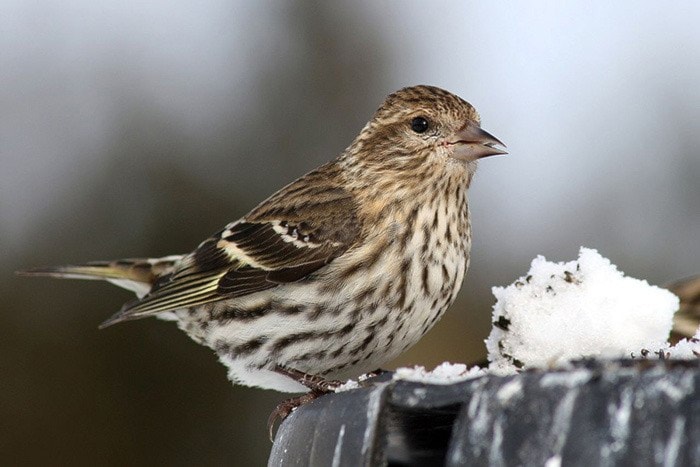Backyard bird enthusiasts should regularly clean their bird feeders and bird baths at this time of year, as migratory songbirds return from their winter retreats.
Species such as pine siskins, redpolls and grosbeaks congregate in large flocks in spring, and their close contact at a time of weather stress and nutrition shortage can pass diseases from bird to bird, says a bulletin from the B.C. forests ministry.
Cleaning feeders every two weeks and changing water in bird baths every few days can reduce the spread of avian pox virus, avian conjunctivitis and salmonella bacteria among birds. Using metal or plastic feeders rather than wood, and spreading out multiple small feeders that only allow one or two birds at a time also reduces the risk of disease transmission.
Wildlife biologists say these bird diseases can also spread to people handling infected birds or contaminated materials. Placing bird feeders over a concrete surface allows easier cleanup of litter underneath, which can also prevent spread of infection.
If you see one or two sick birds in your area, biologists advise clearing and scrubbing the feeder. If there are more than three diseased birds, take your feeder down for a week or two to encourage birds to disperse.
Here are some common signs to look for:
• Birds with avian conjunctivitis have red, swollen, watery or crusted eyes. Infection can be spread by feeders with small openings that birds touch with the sides of their heads. Infected birds may have trouble feeding and remain on the ground near the feeder.
• Birds with salmonella bacterium may be found dead or appear tame, sitting quietly for hours or days, often with their feathers fluffed up. Salmonella can easily spread to pets or humans, and so strict hygiene should be enforced in these situations.
• Birds with avian pox virus may have warty lesions on the unfeathered parts of their head, legs or feet.
